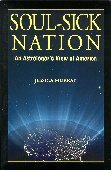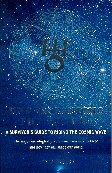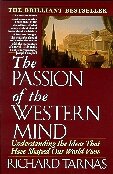Comment: The book is subtitled, The major astrological predictions from now to 2020 and how they will shape our world. The book is copyright 2008. The premise of the book is to list all the upcoming major transits & try to make some sense of them. The summary is in Appendix 6, entitled, Hotspots. It functions as an index for the book. In the Astro-Quantum Health Warning is this:
This Book is not about prediction. This book is about "conditions today" as seen through the lens of past, present and future planetary motion and symbolism which is astrology, and of the various theories in quantum physics, especially one called Observer Created Reality. Both, in real or metaphysical terms, state that how we are, and how we see it, is how we make it. In other words, and particularly with the help of these two subjects ...
We Make Our Own Future Now (pg. vii)
On the next page, the author says the book was completed in November, 2007. He lives in the Lake District of England.
Despite what the author says, this is a book of prediction. The publishers are no fools. (Watkins is a major London bookseller that has long been active in publishing.) They want something that will sell, and almanacs, which this essentially is, sell quite well, thank-you very much.
Any fool can take an ephemeris & plainly see the next dozen years will be horrific. Any intelligent, living fool has been depressed ever since it first came to his attention, and I make no claim to be an exception to this rule. It is only the interpretation that is in question. So. What is the author looking for? What is Lyn Birbeck's point of view?
You will find it in the introduction. Here is his list, in order:
Global warming; energy; terrorism; extremism/crime/violence; nuclear war from "rogue states"; dodgy science, which he defines as bad nuclear reactors, pollution & GM crops; too much reliance on computers; outdated economic structures; too much air travel/too much migration; overdue natural disasters, like the volcano in Yellowstone Park. (adapted from pg. 1)
We now fast-forward to pg. 298 of Appendix 6, Hotspots. September 2008 has one hot day: September 8. It has three entries, which refer us to a total of seven pages in the book. Here is a summary of what Mr. Birbeck believes may have happened at that time (I write on October 3, 2008):
Favorable, happy, positive; positive awareness, agreement between factions; helpful & productive; great destruction; disruption exacerbated (global warming & economy are mentioned). - Was this helpful?
As we now know, global financial markets very nearly collapsed shortly after September 8. Data is still coming in that suggests the US economy (the only one I know anything about) may have collapsed during that month. And from what I've read, global financial collapse is still on the cards. Despite, or perhaps because of, the bailout.
As is typical in books of this sort, the author compiles long lists of "what happened the last time these two planets got together" and then uses that in an effort to project what might happen the next time they meet. This is a lot like the military preparing to fight the last war, and being surprised by what actually transpires once armies start to march. It spares the lazy general - or author - the necessity of actually LOOKING AT and THINKING ABOUT the world as it exists TODAY.
November, 2010. That was what I wrote two years ago. The author himself has now written and taken me to task about my remarks, which he terms scathing. Well, with all apologies, I very often am scathing. But I always enjoy taking a second look at my reviews.
In my original notes I started with Mr. Birkbeck's likely forecast, above, and then gave some of my own. Which was unfair of me, since Birkbek sat down & wrote a book, whereas I merely piggybacked.
Having thought further, it seems to me that books like this are written to a formula:
First, there is a prolonged wave of bad news, such that the future looks grim. An astute publisher - Watkins, in this case - commissions an author who "knows something about this stuff" to write a forecast. In the resulting book, the author first demonstrates his ability with forecasting in general, before getting down to offering future trends, or outright predictions, as the case may be. In his note to me, Mr. Birkbeck wrote,
In fact, my intention was always to impart some kind of philosophy or method of 'understanding the future' merely than trying to predict it. Otherwise I'd have called the book 'Knowing the Future'.
Which, I regret to say, is a distinction that will be lost. To the publisher, to readers, to reviewers. We're all going to chop the book up until we find the good parts, and if we can't actually find them, we will make them up whole cloth, as in the immortal line that never was, Play it again, Sam!.
But something curious happens to our author in the process of writing his book. He starts with current events, he demonstrates his ability to comprehend them, but then he substitutes, either his own, unsupported conclusions, or a survey of likely outcomes that he has read he in the popular press. One or the other, usually a bit of both.
In Mr. Birkbeck's case, his publisher has done our work for us. On the back cover it states,
Now we stand at the brink of worldwide environmental disaster, economic chaos, and moral bankruptcy.
In my original remarks about this book, I did the same. I substituted my ideas for Mr. Birkbeck's, which were no better. For it is true, much too true, that the future is, in fact, beyond our comprehension. Forecasts are no sooner made, with all due deliberation and study, than six months pass and they look absurd.
Always. Mine, yours, his, God's. No one knows. No one can know.
Since this is invariably true, the shrewd forecaster, after he has established his bona fides (the first two or three chapters, in other words), will immediately launch into wholesale fantasy. The more fantastic, the better.
Political satirists have been doing this since forever. I still remember Alexander Cockburn's forecast for 1977, spashed all over the front of the Village Voice: BURT REYNOLDS SLAIN BY KILLER BEES! Which, to be fair, was in part a protest of Rupert Murdoch's recent purchase of the paper. Fortunately, Mr. Reynolds is, as of this date, still very much alive, having wisely heeded the words of the Irish soothsayer and avoided dangerous insects.
An even more shrewd pundit would take his forecasts a stage further and set them in obscure quatrains. Populate his ravings with macbre & grotesque headless torsos. There's a reason Mr. Birkbeck's book has faded from view, and there are equally good reasons why Johnny's and, Mikey of Notre Dame's have not. "Prophecies" are written to formula. The better you use the formula, the better your work will be.
In other words, Mr. Birkbeck's sin was that he tried too hard. Was too honest. Because, it seems to me, in prophecy, the harder you try, the more honest you are, the faster you fail. What you want to write, what will give you your best shot at immortality, is very scary, very nearly incomprehensible gibberish. If you can make up a story how it came to you in a dream, so much the better.
Christian fundamentalists are unafraid. Recently I was shipped four copies of A Land Unknown, Hell's Dominion, by B.W. Melvin, by mistake. It purports to be a faithful record of a near death experience (i.e., a dream) that ended up, literally, in hell. The gibberish factor was on the low side (there were Borg, for heavens sake!), but the scare factor was as far off the chart as the author & publisher could make it. This excellent piece of rubbish - for rubbish it was - will be in print for decades.
As for what will transpire in the years out to 2020 (the focus of Birkbeck's book), your guess is as good a guess as any. We all live one day at a time. Right now, the future still looks damn scary. Birkbeck's book is as good a sketch as any, and will serve the useful task of listing the essential astrological factors behind events, even if the actual events aren't quite what the book predicted.
The future will be, in fact, a surprise to God himself. (If the future were known, there would be no point to this whole mess.) Which, if you think about it, means that we are his equal & we will be his, and our, Ultimate Surprise. The ultimate outcome is not only unknown, but will remain completely unknowable, right down to the very last dizzying second.
Watkins, 310 pages.


Indicates a book on our Top Ten list. If you would like to find more books like it, click on the star.






